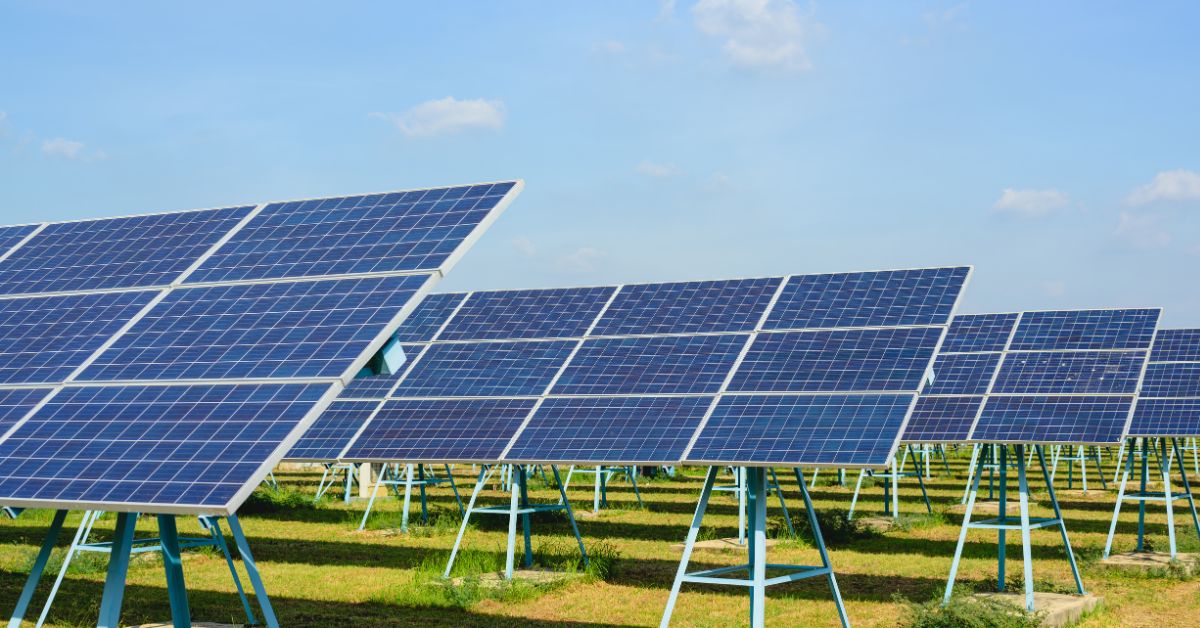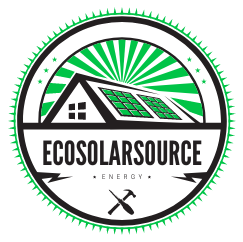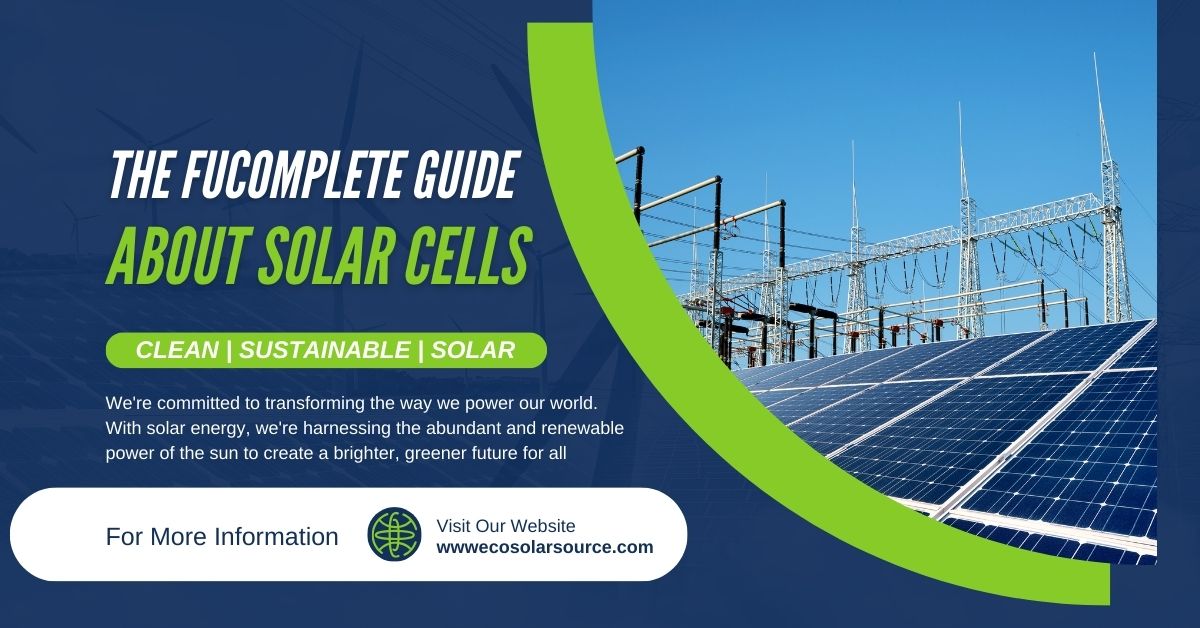Complete Guide About Solar Cells
A Complete Guide About Solar Cells offers an in-depth exploration of solar energy, focusing on the technology behind solar cells. It covers the fundamental principles of photovoltaic energy conversion, explaining how sunlight is transformed into electricity.
The guide delves into different types of solar cells—monocrystalline, polycrystalline, and thin-film—highlighting their efficiency, applications, and cost considerations. It also discusses the installation process, maintenance, and future advancements in solar technology. With insights into the environmental benefits, economic advantages, and challenges of solar power, this guide serves as a comprehensive resource for both beginners and experts in renewable energy solutions.
Table of Contents
Complete Guide About Solar Cells
The global shift toward sustainable energy sources is shaping the future of energy production, and solar power has become a prominent part of this revolution. Solar cells, also known as photovoltaic (PV) cells, convert sunlight directly into electricity and have emerged as a vital technology in renewable energy solutions. In this guide, we will delve deep into solar cells, exploring their types, working principles, efficiency, applications, and the future of solar technology. Whether you’re a homeowner considering solar panels or an enthusiast wanting to learn more about solar energy, this comprehensive guide will provide valuable insights into the world of solar cells.
What Are Solar Cells?
A solar cell is an electronic device that captures sunlight and converts it directly into electrical energy through the photovoltaic effect. These cells are the building blocks of solar panels, which consist of many solar cells connected in series or parallel to achieve higher power output. Solar cells are a key component of renewable energy systems and are widely used in residential, commercial, and industrial applications to harness solar power.
Solar cells play a crucial role in the transition to green energy, helping reduce reliance on fossil fuels and mitigating climate change. As energy needs grow, the demand for efficient, cost-effective, and environmentally friendly technologies has driven significant advancements in solar cell design and manufacturing.
History and Development of Solar Cells
The concept of solar power has been around for centuries, but the modern solar cell was invented in 1954 by scientists at Bell Laboratories. These early cells were made of silicon, a semiconductor material still widely used today, and had an efficiency of about 6%.

- 1839: The photovoltaic effect was first observed by French physicist Alexandre-Edmond Becquerel, who discovered that certain materials could generate small amounts of electric current when exposed to light.
- 1873-1876: English scientist Willoughby Smith discovered the photoconductivity of selenium, and William Grylls Adams, with his student Richard Day, built the first selenium-based photovoltaic cell.
- 1954: Bell Laboratories produced the first practical silicon solar cell, marking the start of modern solar energy.
- 1970s: The energy crisis led to renewed interest in solar energy, and governments began funding solar research, resulting in major technological improvements.
- 21st Century: Solar cells became more efficient and affordable, transforming from niche technology into a mainstream energy solution.
Today, solar cell technology continues to advance with new materials and designs, offering even higher efficiencies and broader applications.
How Solar Cells Work
Solar cells work by converting sunlight directly into electricity using the photovoltaic effect. This is the process where light photons knock electrons loose from atoms in a semiconductor material (usually silicon), creating a flow of electricity.
Photovoltaic Effect
The photovoltaic effect occurs when photons (light particles) strike a semiconductor material, typically silicon. Here’s a simplified version of how it works:
- Absorption of Light: When sunlight hits the solar cell, it excites electrons in the material, causing them to move.
- Electron Movement: These excited electrons are knocked loose from their atoms and move freely within the material, creating an electric current.
- Flow of Electricity: An electric field in the solar cell helps direct the flow of these electrons into a circuit, where they can be used to power devices or stored for later use.
Components of a Solar Cell
- Semiconductor Material: Silicon is the most commonly used semiconductor in solar cells because of its abundance and efficiency.
- Anti-reflective Coating: Solar cells are treated with an anti-reflective coating to minimize the loss of sunlight through reflection.
- Metal Contacts: These are placed on the front and back of the solar cell to conduct the electricity generated by the movement of electrons.
- Glass or Plastic Covering: This protective layer helps shield the cell from environmental elements like dirt, rain, and hail.
Types of Solar Cells
Solar cells are categorized based on the materials and manufacturing techniques used. The most common types of solar cells are:
Monocrystalline Solar Cells
Monocrystalline solar cells are made from a single, continuous crystal structure of silicon. They are known for their high efficiency and durability but tend to be more expensive due to the complexity of their manufacturing process. Monocrystalline cells are easily recognizable by their uniform dark appearance and rounded edges.
- Efficiency: Typically ranges from 15-22%
- Advantages: High efficiency, space-saving, long lifespan
- Disadvantages: Higher cost
Polycrystalline Solar Cells
Polycrystalline solar cells are made from silicon crystals that have been melted and poured into molds, resulting in multiple crystal structures. While slightly less efficient than monocrystalline cells, polycrystalline solar cells are more affordable and are widely used in residential installations.
- Efficiency: Typically ranges from 13-18%
- Advantages: Lower cost, easier manufacturing process
- Disadvantages: Slightly lower efficiency, larger space requirements
Thin-Film Solar Cells
Thin-film solar cells are made by depositing layers of photovoltaic material onto a substrate such as glass, plastic, or metal. These cells are lightweight and flexible, making them ideal for applications where conventional panels aren’t suitable.
- Efficiency: Typically ranges from 10-12%
- Advantages: Lightweight, flexible, works well in low light conditions
- Disadvantages: Lower efficiency, degradation over time
Emerging Technologies
- Perovskite Solar Cells: Perovskite materials have shown great potential due to their high efficiency and ease of manufacturing. They are currently being researched for commercialization.
- Organic Solar Cells: These are made from organic polymers and can be produced using less energy than traditional solar cells. Though less efficient, organic solar cells are promising for low-cost applications.
Efficiency of Solar Cells
Solar cell efficiency refers to the percentage of sunlight energy that a solar cell can convert into usable electricity. For example, a solar cell with 20% efficiency converts 20% of the sunlight it receives into electrical energy.

Factors Affecting Solar Cell Efficiency
- Material Quality: The purity and crystalline structure of the semiconductor material significantly impact the efficiency.
- Temperature: High temperatures can decrease the efficiency of solar cells, as they affect the movement of electrons.
- Light Intensity: The amount of sunlight reaching the solar panel affects its output. Cloud cover and shading can reduce efficiency.
- Orientation and Angle: Solar panels are most efficient when they are facing the sun directly. Panels should be oriented and tilted for maximum sun exposure.
- Age of the Panels: Solar cells degrade over time, leading to a gradual decrease in efficiency. Most solar panels lose about 0.5% efficiency per year.
How to Improve Solar Cell Efficiency
- Concentrated Solar Power: Use mirrors or lenses to focus a larger area of sunlight onto the solar cells, increasing the intensity of light they receive.
- Tracking Systems: Solar tracking systems rotate solar panels to follow the sun’s movement, maximizing their exposure to sunlight throughout the day.
- Better Materials: Research into new materials, like perovskites, is leading to more efficient and cost-effective solar cells.
- Minimize Shading: Ensuring that solar panels are not shaded by trees, buildings, or other objects can greatly improve efficiency.
Applications of Solar Cells
Solar cells are versatile and can be used in a variety of applications, from small-scale devices to large-scale power plants.
Residential and Commercial Installations
Solar panels are commonly installed on rooftops of homes and businesses to generate electricity, reduce energy costs, and decrease reliance on the grid. These systems often include battery storage to ensure a continuous power supply, even at night or during cloudy days.
Solar Farms
Large-scale solar farms consist of thousands of interconnected solar panels that generate electricity to supply the grid. Solar farms are an efficient way to produce electricity for communities, industries, and cities.
Portable Solar Devices
Portable solar chargers and other small-scale devices allow users to charge gadgets like phones, cameras, and laptops using solar power. This technology is particularly useful in remote areas where electricity is unavailable.
Space Exploration
Solar cells have long been used in space exploration to power satellites and space stations, where other energy sources are impractical. Solar panels are one of the most reliable and efficient sources of energy in space environments.
Advantages of Solar Cells
- Renewable Energy Source: Solar energy is a clean, renewable source of energy that doesn’t produce harmful emissions.
- Energy Independence: By generating your power, you reduce reliance on the grid and fossil fuels, increasing energy security.
- Cost Savings: The Solar power can be significantly reduce electricity bills over time. With government incentives, the initial investment can be recovered relatively quickly.
- Low Maintenance: Solar systems typically require little maintenance, as they have no moving parts. The Regular cleaning and the occasional inspections are usually sufficient.
- Scalable: Solar cells can be used in both small devices and large power plants, making them adaptable for various applications.
Challenges and Limitations of Solar Cells
Despite their advantages, solar cells face several challenges and limitations:
Cost Considerations
While the cost of solar cells has decreased significantly over the years, the initial investment is still relatively high for many consumers. Government incentives and subsidies can help, but upfront costs remain a barrier to widespread adoption.
Efficiency and Space Requirements
Solar cells have an upper limit on efficiency, with most commercial solar panels converting 15-22% of sunlight into electricity. To generate significant power, large arrays of solar panels are needed, which requires considerable space. This can be a challenge in densely populated areas.
Energy Storage Issues
Solar power is intermittent, as it only generates electricity during daylight hours. To ensure a consistent power supply, energy storage systems (like batteries) are necessary, but these add to the cost and complexity of solar installations.
Future Trends in Solar Cell Technology
Next-Generation Materials
Materials such as perovskite and quantum dots show promise for creating more efficient and cost-effective solar cells. These materials are still in the research phase, but they could revolutionize the solar industry by making solar panels cheaper and more efficient.
Integration with Smart Grids
As smart grid technology becomes more prevalent, solar cells will play a critical role in decentralizing power generation. Solar systems connected to smart grids will allow for more efficient energy distribution and storage.
Solar Cells in Urban Infrastructure
The concept of building-integrated photovoltaics (BIPV) involves incorporating solar cells into building materials such as windows, walls, and roofs. This allows urban infrastructure to generate electricity without requiring additional land.
How to Choose the Right Solar Cell for Your Needs
When choosing solar cells or solar panels, consider the following factors:

- Efficiency: Higher efficiency means more electricity generation, especially if space is limited.
- Cost: Balance the upfront cost with potential energy savings over time. Look for government rebates or incentives.
- Durability: Solar panels are long-term investments, so choose a system with a long warranty and proven reliability.
- Installation Space: Assess the available space for the installation. If you have limited roof space, high-efficiency panels might be necessary.
- Energy Needs: Estimate your energy consumption to determine how large your solar array should be. Consider your future of energy needs as well.
FAQs About Complete Guide About Solar Cells
Q1. What is a solar cell?
A solar cell, is also known as a photovoltaic (PV) cell, is a device that converts sunlight directly into electricity using the photovoltaic effect.
Q2. How do solar cells work?
Solar cells absorb sunlight, which excites electrons in the material (usually silicon). These excited electrons generate an electric current when they move through the material.
Q3. What materials are used in solar cells?
The most common material used in solar cells is silicon, but other materials like cadmium telluride (CdTe), copper indium gallium selenide (CIGS), and perovskites are also used.
Q4. What is the efficiency of a solar cell?
Efficiency refers to the percentage of sunlight that can be converted into usable electricity. Most commercial solar panels have an efficiency rate of 15% to 22%.
Q5. How long do solar cells last?
Solar cells typically have a lifespan of 25 to 30 years. However, their efficiency may decrease slightly over time.
Q6. Do solar cells work on cloudy days or at night?
Solar cells can still generate electricity on cloudy days but at reduced efficiency. They do not produce electricity at night; energy storage or grid power is required.
Q7. What are the different types of solar cells?
The main types of solar cells are monocrystalline, polycrystalline, and thin-film cells. Monocrystalline cells are the most efficient, while thin-film cells are lighter and more flexible.
Q8. How much energy can be a solar cell produce?
The amount of energy a solar cell produces depends on its size, efficiency, and the amount of sunlight it receives. Typically, a solar panel generates about 250-400 watts of power.
Q9. What factors affect solar cell performance?
Solar cell performance is influenced by factors such as sunlight intensity, temperature, shading, orientation, and cleanliness of the panels.
Q10. How are solar cells installed?
Solar cells are assembled into solar panels and mounted on rooftops or ground-based systems. Installation involves proper orientation, tilt, and secure wiring to the grid or battery system.
Q11. Are solar cells environmentally friendly?
Yes, solar cells generate clean energy by reducing reliance on fossil fuels, but their production involves energy-intensive processes and some materials that can impact the environment.
Q12. How much do solar cells cost?
The cost of solar cells varies depending on the type, installation size, and location. Prices have decreased significantly in recent years, with the average cost ranging from $2.50 to $3.50 per watt installed.
Q13. What is a solar inverter, and why is it important?
A solar inverter converts the direct current (DC) generated by solar cells into alternating current (AC), which is used by most household appliances and the grid.
Q14. Can solar cells power my entire home?
Yes, depending on the system size and energy consumption, solar cells can power a home. Homes with solar power systems may require grid backup or battery storage for continuous electricity.
Q15. What are future of solar cells?
The future of solar cells looks promising, with ongoing research into higher efficiency, lower costs, flexible designs, and newer materials like perovskites to make solar power more accessible and affordable.
Solar cells are at the forefront of the transition toward a cleaner, more sustainable energy future. With advancements in technology making solar cells more efficient and affordable, solar energy is becoming an increasingly viable option for households, businesses, and governments alike. By understanding how solar cells work, the different types available, and their applications, you can make informed decisions about integrating solar energy into your life.
As the global community pushes toward reducing carbon emissions and tackling climate change, solar cells will continue to play a pivotal role in shaping a more sustainable and energy-independent world.
Click here to learn more about Complete Guide About Solar Cells
Click here to learn more about 7 Reasons Why Installing Solar Panels on Your Roof is a Good Idea

